

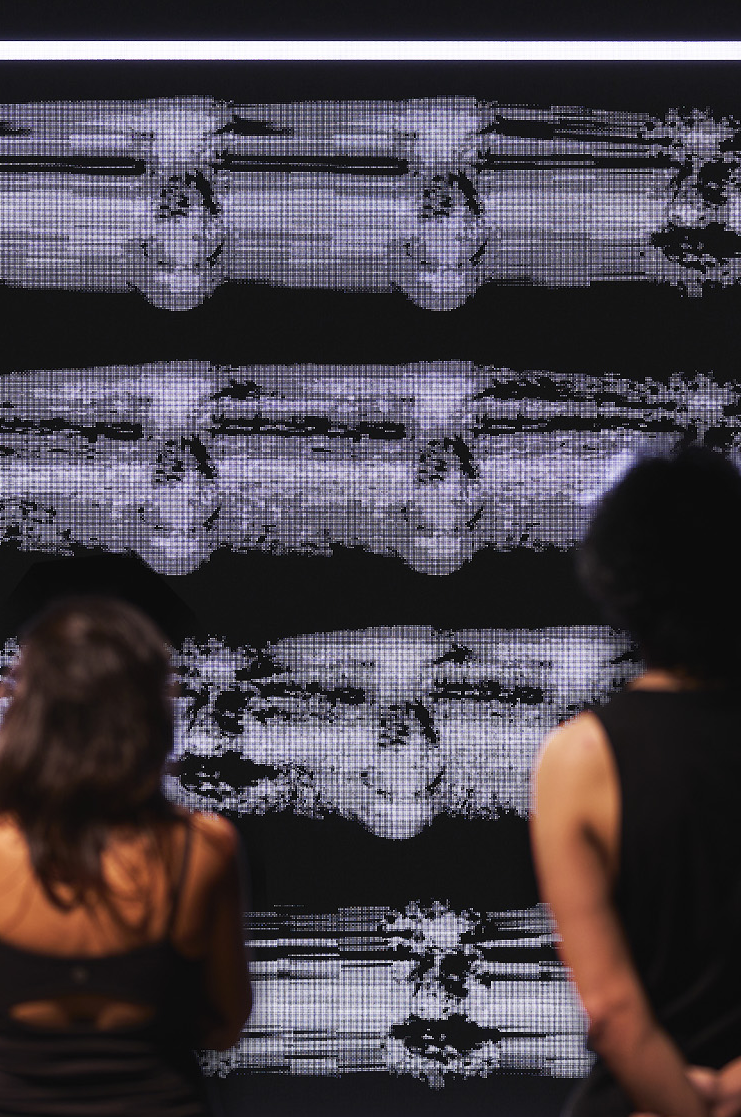
Iregular
Voices In Your Head
There is no better way to measure the influence we exert upon humans than through making them change their behaviour in real time. This is what Iregular’s digital interactive artworks are all about: they attempt to create a language so clear and so universal that it allows the communication between the interactive art piece and the human to flow intuitively every time, without any instruction in sight, as if guided by a voice running through the head.

MARTIN HESSELMEIER & ANDREAS MUXEL
CAPACITIVE BODY
file festival
The installation “capacitive body” is a modular light system that reacts to the sound of its environment. Each custom-built module consists of an electro-luminescent light wire linked to a piezoelectric sensor and a microcontroller. Through its modular setup it can easily be adapted to various urban spaces. The sensors are used to measure vibrations of architectural solids in a range of low frequencies. These oscillations are triggered by surrounding ambient noise, for example traffic noise. The data sensor controls the light wires, which are tensed to a spatial net structure. According to the values of the measurement, light flashes are generated. With increasing vibrations the time between flashes becomes shorter and shorter. The stability of this nervous system gets to an end where it collapses and restarts again. A dynamic light space is thereby created, which creates a visual feedback of the aural activity around the installation.

John Butler
Gaitkeeper
“Just be yourself, and nobody else”. Our motions, as distinctive as our faces, will soon be captured and interned. Gaitkeeper is a biometric control suite designed to counter the challenge of ‘Locomotive Camouflage’. LoCam, which combines the physical control of dance with the unpredictability of performance art, is rapidly being adopted by civic insurgents. Gaitkeeper units, based on the off-the-shelf Kiva chassis, are now being deployed as standard counter measures.
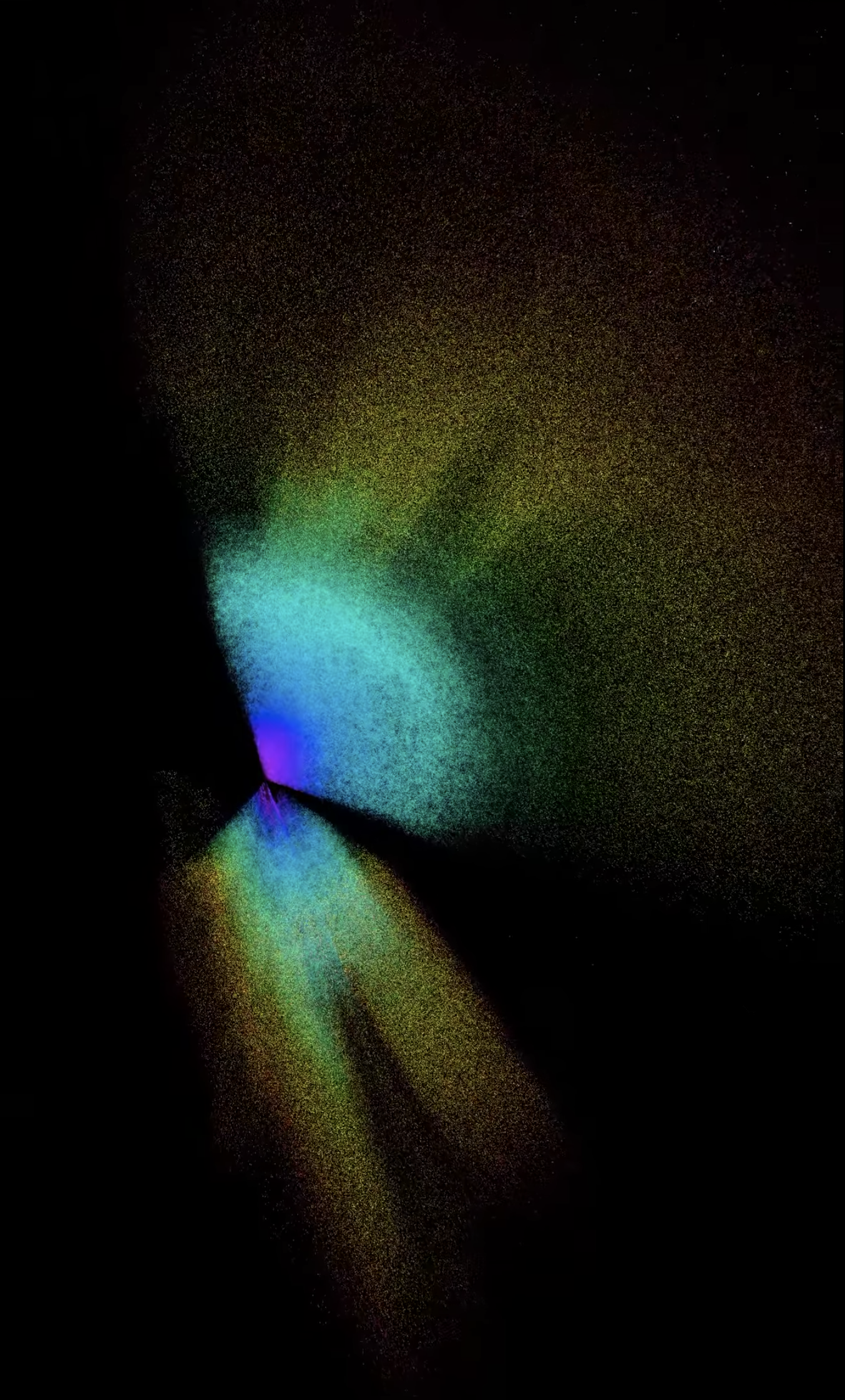
The eBOSS 3D map of the Universe
extended Baryon Oscillation Spectroscopic Survey ( eBOSS)
“Taken together, detailed analyses of the eBOSS map and the earlier SDSS experiments have now provided the most accurate expansion history measurements over the widest-ever range of cosmic time. These studies allow us to connect all these measurements into a complete story of the expansion of the Universe.” Will Percival

Kexin Hao
Future Dance of Nostalgia
Future Dance of Nostalgia is a dancing game which invites audience to perform the choreography that extracts and abstracts the movements found in the pre-industrial, heavy physical labour, and work songs. Motion tracking technology allows the body movements to be quantified, measured, and evaluated. Historical archives of work songs provide the inspiration for the music that renders the old tales and melodies into clubbing beats that lead the dance.

Robert Rauschenberg
Mud Muse
One of the show’s highlights is Mud Muse (1968-71), which is 1,000 gallons of bubbling Bentonite clay in a 12ft by 9ft (365cm x 274cm) tank.The work is also something of a technical feat in that it is listening to itself. The mud’s bubbles and spurts are measured by microphones, which in turn trigger a complex series of pumps to release more air and create more bubbling.

matthew bird
parallaxis
In a new moving-image work by Melbourne-based artist and architect Matthew Bird, two bodies move across the land, working with large cylindrical instruments. We witness them map and survey a terrain analogous to universal physical and psychological locations, each revolution marking a paradoxical attempt to pin an earthly position through perpetual movement. Playing on the human need to understand our relationship to the people and places around us, Parallaxis considers the potential for architectural processes and measurements to act as a foundation for structures of understanding.
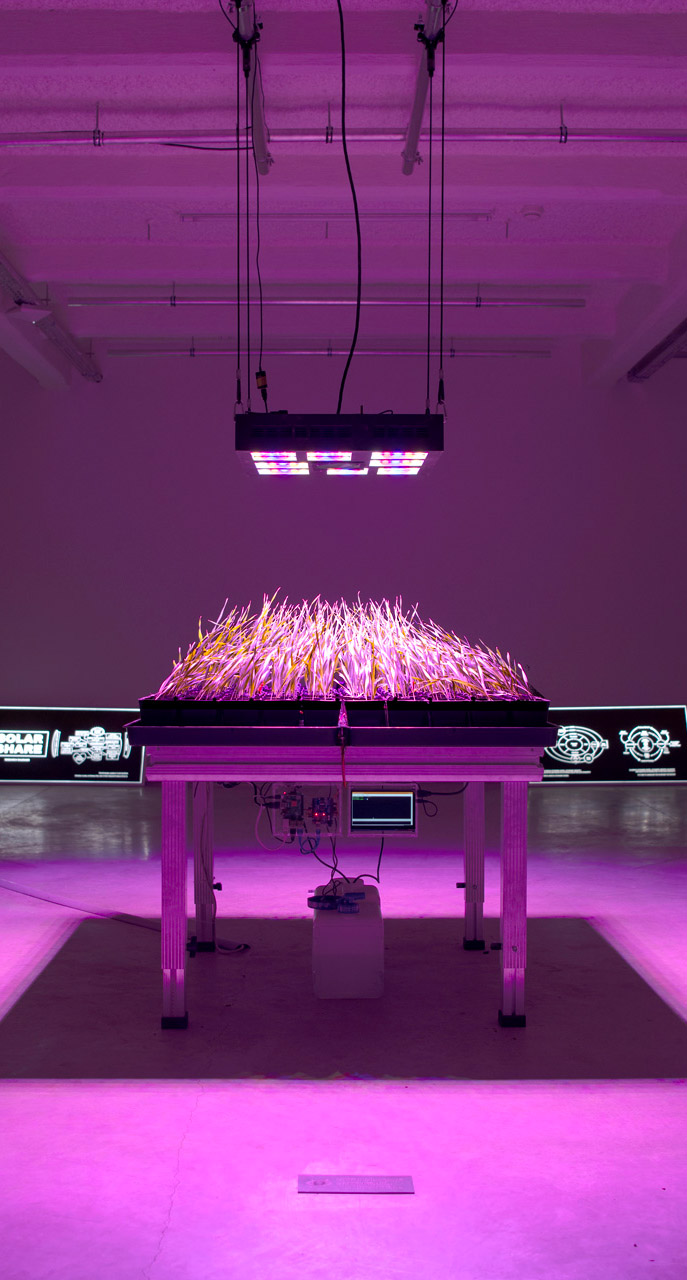
disnovation.org
LIFE SUPPORT SYSTEM (AKA. THE FARM)
This artistic provocation seeks to estimate the orders of magnitude of critical ecosystem services fundamental to all planetary life processes. This experiment consists of 1 square meter of wheat, cultivated in a closed environment. Critical inputs such as water, light, heat, and nutrients are measured, monitored and displayed for the public. This procedure makes palpable the immense scale of ecosystem contributions, and provides a speculative reference for a reckoning of the undervalued and over-exploited “work of the biosphere.”
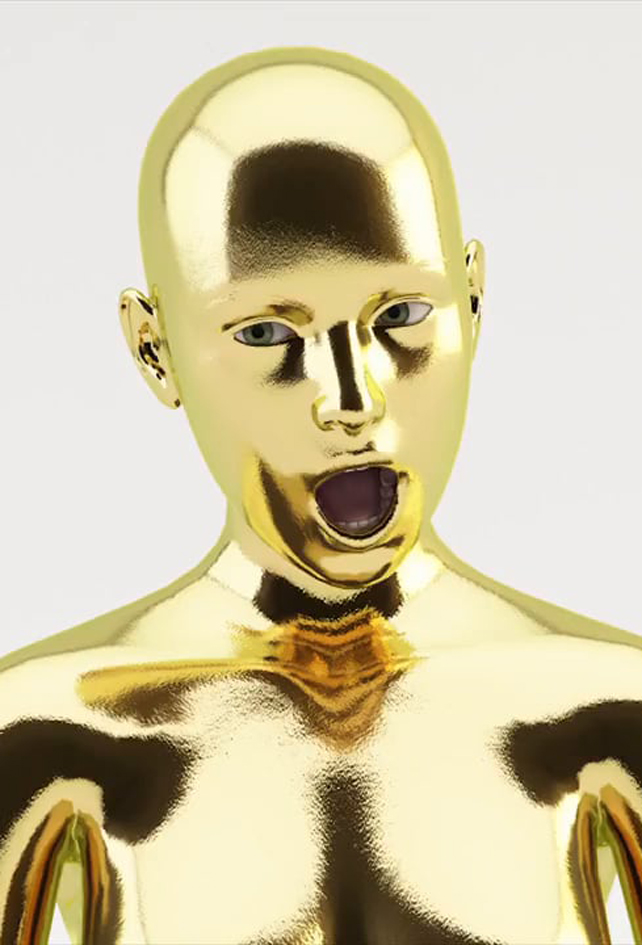
MIKE PELLETIER
МАЙК ПЕЛЛЕТЬЕ
Measured Gold
Der niederländische Künstler Mike Pelletier ist ein interaktiver Experte und digitaler Künstler. Er experimentiert mit neuen Möglichkeiten zur Verwendung von Microsoft Kinect und verwendet das Tool als 3D-Scanner. Dabei nutzt er die Ressourcen der Kamera, um unglaubliche mehrdimensionale Porträts zu erstellen. Durch Bewegen der Kinect-Kamera um das Objekt aktualisiert die Software die Daten ständig, um ein 3D-Modell zu erstellen. Nach einigen Minuten der Verfolgung kann ein sehr detailliertes Modell einer Person erhalten werden. „Mein Ziel war es, eine Skulptur zu schaffen, die ohne digitale Technologien nicht existieren könnte“, sagt der Künstler. Die Bilder werden auf Metallpapier gedruckt und hinter Plexiglas-Acryl montiert.

Rino Stefano Tagliafierro
The Last Supper Alive
File Festival
A six minute video installation that brings to life the famous late 16th century work by Leonardo Da Vinci. The slight movements of the figures enhance the choral nature of the Last Supper, with a very measured and meticulous direction that overcomes the fixity of the painting adorning the wall of the refectory of the Convent of Santa Maria delle Grazie in Milan, bringing it back to life and providing it with a new spatial context.

Studio A N F
Computer Visions 2
After more decades of trying to construct an apparatus that can think, we may be finally witnessing the fruits of those efforts: machines that know. That is to say, not only machines that can measure and look up information, but ones that seem to have a qualitative understanding of the world. A neural network trained on faces does not only know what a human face looks like, it has a sense of what a face is. Although the algorithms that produce such para-neuronal formations are relatively simple, we do not fully understand how they work. A variety of research labs have also been successfully training such nets on functional magnetic resonance imaging (fMRI) scans of living brains, enabling them to effectively extract images, concepts, thoughts from a person’s mind. This is where the inflection likely happens, as a double one: a technology whose workings are not well understood, qualitatively analyzing an equally unclear natural formation with a degree of success. Andreas N. Fischer’s work Computer Visions II seems to be waiting just beyond this cusp, where two kinds of knowing beings meet in a psychotherapeutic session of sorts[…]

Andrea Polli
Particle Falls
Particle Falls is a large-scale, real-time visualization of air-quality data.On a background of falling blue light, spots of bright, fiery color emerge and crackle, representing the presence of fine particulate matter, as detected by a nearby air monitor. Fewer bright spots over the falls mean fewer particles in the air.Particle Falls draws our attention to the invisible particles that surround us and that may affect our health. While the visible smog that plagued many U.S. urban centers decades ago has been mitigated by technology and regulatory measures, microscopic threats to our air continue to exist and often go unnoticed. Particle Falls is one way we can learn more about the quality of air around us.

REVITAL COHEN & TUUR VAN BALEN
The Immortal
A number of life-support machines are connected to each other, circulating liquids and air in attempt to mimic a biological structure.
The Immortal investigates human dependence on electronics, the desire to make machines replicate organisms and our perception of anatomy as reflected by biomedical engineering.
A web of tubes and electric cords are interwoven in closed circuits through a Heart-Lung Machine, Dialysis Machine, an Infant Incubator, a Mechanical Ventilator and an Intraoperative Cell Salvage Machine. The organ replacement machines operate in orchestrated loops, keeping each other alive through circulation of electrical impulses, oxygen and artificial blood.
Salted water acts as blood replacement: throughout the artificial circulatory system minerals are added and filtered out again, the blood gets oxygenated via contact with the oxygen cycle, and an ECG device monitors the system’s heartbeat. As the fluid pumps around the room in a meditative pulse, the sound of mechanical breath and slow humming of motors resonates in the body through a comforting yet disquieting soundscape.Life support machines are extraordinary devices; computers designed to activate our bodies when anatomy fails, hidden away in hospital wards. Although they are designed as the ultimate utilitarian appliances, they are extremely meaningful and carry a complex social, cultural and ethical subtext. While life prolonging technologies are invented as emergency measures to combat or delay death, my interest lies in considering these devices as a human enhancement strategy.This work is a continuation of my investigation of the patient as a cyborg, questioning the relationship between medicine and techno- fantasies about mechanical bodies, hyper abilities and posthumanism.

Karen Lancel and Hermen Maat
Kissing Data Symphony
Intimacy Data Symphony is a poetic ritual for intimate experience of Kissing and Caressing each other faces, multi-sensory and socially shared in public space of merging realities. In live experiments with Multi-Brain BCI E.E.G. head-sets, visitors are invited as Kissers (or Caressers) and Spectators. Brain activity of people kissing and caressing is measured and visualized in streaming E.E.G. data, real-time circling around them in a floor projection. Simultaneously, the Spectators brain waves are measured, their neurons mirroring activity of intimate kissing and caressing movements, resonating in their imagination. The Spectators brain activity data are interwoven in the data-visualization. Brain activity of all participants, mirroring each others emotional expressions and movements, in interpersonal and aesthetic ways, co-create an immersive visual, Reflexive Datascape.

Verena Friedrich
Vanitas Machine
The installation VANITAS MACHINE addresses the desire for eternal life and the potential of life-prolonging measures. Based on a candle which – by means of technical intervention – burns down very slowly, vanitas machine creates a contemporary analogy to the endeavour of prolonging the human lifespan with the help of science and technology.Being one of the classical vanitas symbols, a burning candle recalls the futility of the moment, the transience of human life and the certainty of the end of all existence. But is this end really still inevitable?In the course of the last two centuries, average human life expectancy has increased significantly in the industrialised countries. Moreover, in the context of scientific research the biological causes of ageing are being explored. Numerous theories of aging have already been developed pointing both towards physiological as well as environmental factors.One of the first theories of ageing was the so-called »metabolism theory«, which claims that the lifespan of organisms is reciprocally related to energy turnover and therefore connected to calorie intake, oxygen consumption and heart rate: The higher the metabolic rate, the shorter the lifespan of the organism.

CHRISTO
Христо
big air package
Big Air Package is the largest indoor sculpture in the world. It measures 90 meters in height and 50 meters in diameter. Visitors can enter the inner space of the balloon through airlocks. Inside, Big Air Package reminds of a cathedral that is filled with a diffuse light. Big Air Package is the first project realized without Christo’s late wife and artistic partner Jeanne-Claude.

United Visual Artists
ユナイテッド·ビジュアルアーティスト
美国视觉艺术家
our time
Our Time (2016) is the latest large-scale installation by United Visual Artists investigating our subjective experience of the passing of time. How long is a moment? At what rate does time actually pass? The work joins a series of kinetic sculptures that began with Momentum (2013); an installation designed as a ‘spatial instrument’ that was to reveal the relationship between expectation and perception when intersected with a physical space.
Our Time defines a physical environment where pendulums swing at a pace apparently unhindered by the laws of nature and where no single time measurement applies. The installation combines movement, light and sound as a multi-sensory, multi-dimensional canvas the visitor can enter. Pendulums swing, each to their own rhythm, as time flows through the grid. With light tracing the path and sound its echo, the passing of time becomes almost palpable.

Yihan LI
Since the emergence of time as a concept, the circle has been a graphic representation that registers and measures the passing of seconds, minutes, hours, and even decades. . . . The torus may be seen as a three-dimensional form utilized to represent time as it travels through a cyclic loop. The geometric shape of the torus speaks of duration, of looped time, and of transformations along and in time. In this project, Boolean operations between varying tori in multiple dimensions indicate the interaction between durations—possibly time in addition to time, or interactions diluted by time—that reveal a new architectural realm featuring free curves which direct visitors’ movements inside flowing spaces. People will lose the perception of direction or time and find themselves worshipping in open and serene volumes.
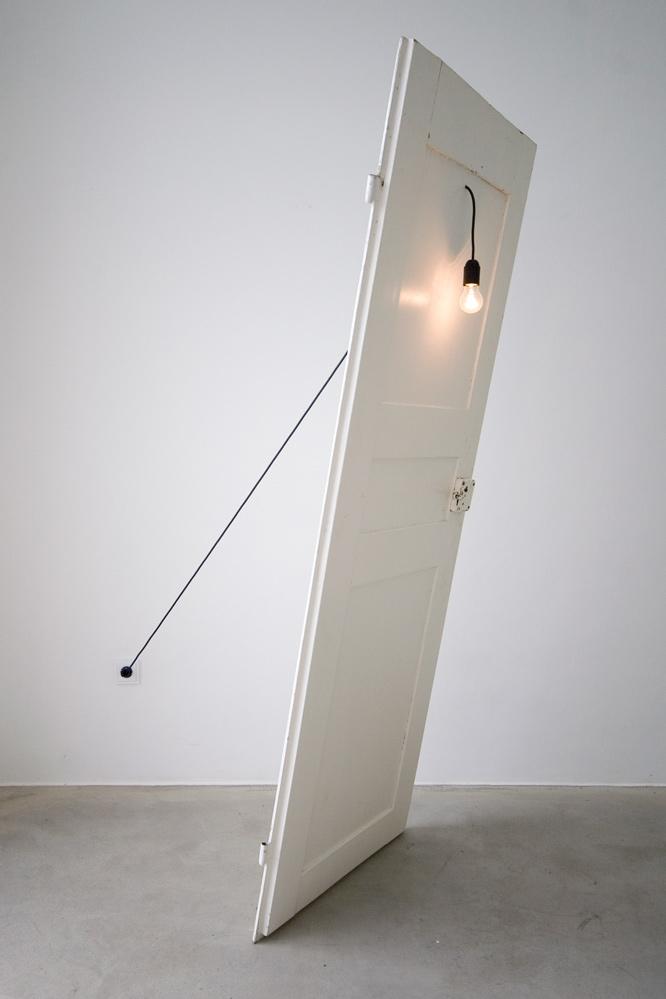
VALENTIN RUHRY
Valentin Ruhry, born in Graz, Austria in 1982, has worked primarily in sculpture. In an analytical, scientific approach, he creates works inspired by technological achievements though it is often the out-dated, obsolete ideas once believed to be visionary that inspire him. Regularly examining the formal and aesthetic aspects of objects, one of his major themes is light and its modulation of volume as well as physically measureable qualities such as tension, force, and friction.

Yihan LI
Architectural Timepiece
Since the emergence of time as a concept, the circle has been a graphic representation that registers and measures the passing of seconds, minutes, hours, and even decades. . . . The torus may be seen as a three-dimensional form utilized to represent time as it travels through a cyclic loop. The geometric shape of the torus speaks of duration, of looped time, and of transformations along and in time. In this project, Boolean operations between varying tori in multiple dimensions indicate the interaction between durations — possibly time in addition to time, or interactions diluted by time — that reveal a new architectural realm featuring free curves which direct visitors’ movements inside flowing spaces. People will lose the perception of direction or time and find themselves worshipping in open and serene volumes.

marcelo moscheta
Marcelo Moscheta is an artist based in Campinas, Brazil. As a traveler who looks at the world like the romantics of the 19th Century or the Great Explorers of the Artic, he has made installations, drawings and photographs born from his time in remote locations. Through uncommon materials and techniques his works addresses the notion of ephemerality and mankind’s efforts to understand and recreate physical and geographical aspects found in natural environments. He is interested in the landscape as a representational system from where man can measure his own world. Drawing, printmaking, photography and installations are his main media.
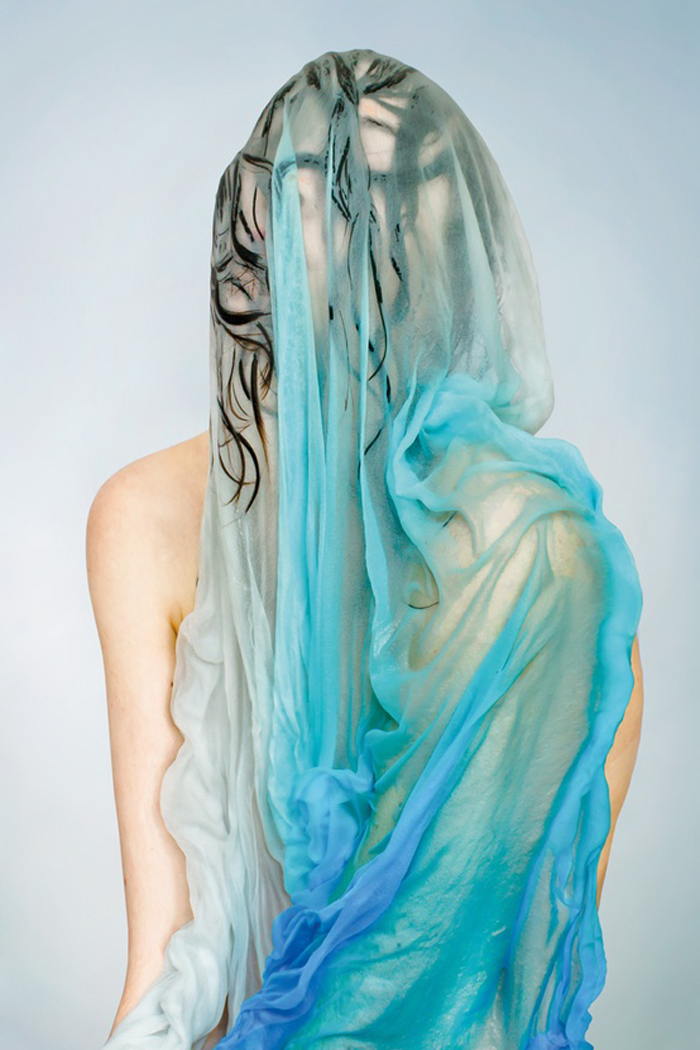
RACHEL ALTABAS
“I move, reverse, manipulate the rules so that they cannot integrate in any frame. My measure is dynamic, it always ties and unties, endlessly exceeding itself. I overflow, going past the initial measure. The resulting drift becomes my new measure and imposes on me another frame, a palette with rigid outlines. I am confronted to strict and solid delimitations. One more time bored of being subjected to the measure.”

Gerwald Rockenschaub
The work of the Austrian artist Gerwald Rockenschaub, born in Linz in 1952, has been associated with Neo-Geo since the early 1980s, when a group of young artists concentrated on the formal vocabulary of the abstract avant-garde. Neo-Geo permeated the aesthetics of American minimal art with the consumeristic position of pop art. Rockenschaub’s art cannot be simply categorised in any particular style, however; in his animations, foil pictures, objects and site-related installations, he refers in equal measure to ideas and positions of modernism and to phenomena of everyday culture.

MARK GARRY
[…] Mark Garry is driven by a fundamental interest in observing how humans navigate the world and the subjectivity inherent in these navigations. Though he uses a variety of media and mechanisms in his practice, he primarily focuses on institution-based installations. These delicately considered site-specific installations are measured and quiet, requiring meticulous systems of construction.

Balint Bolygo
Trace II
Trace II is a sculptural device that alludes to scientific discoveries and the experimental apparatus of science. It is essentially a mechanical computer that draws its analogue programme from a revolving plaster head. The carefully balanced mechanism slowly measures the topography of a cast human head and translates its undulations onto a rotating cylindrical surface. The result is an evolving topographical diagrammatic depiction that is truly unique every time.

FABRICE LE NEZET
Measure
“I worked here on a physical representation of the idea of measure. The objective was to ‘materialize’ tension in a sense, to make the notions of weight, distance and angle palpable…This work lies in the context of my search for purification around raw materials such as concrete and metal. This is why I played with simple shapes which catch light and transcend the volume structure.”

Maxime Guyon & Benoît Jeannet
Guyons’ still life photography is his strongest and most explored work, where graphics, media art, and digital manipulation are all amalgamated to create striking and realised pieces. Evidentially each aspect of his work is measured and deliberate– that’s not to say though that spontaneity isn’t an element of his process.
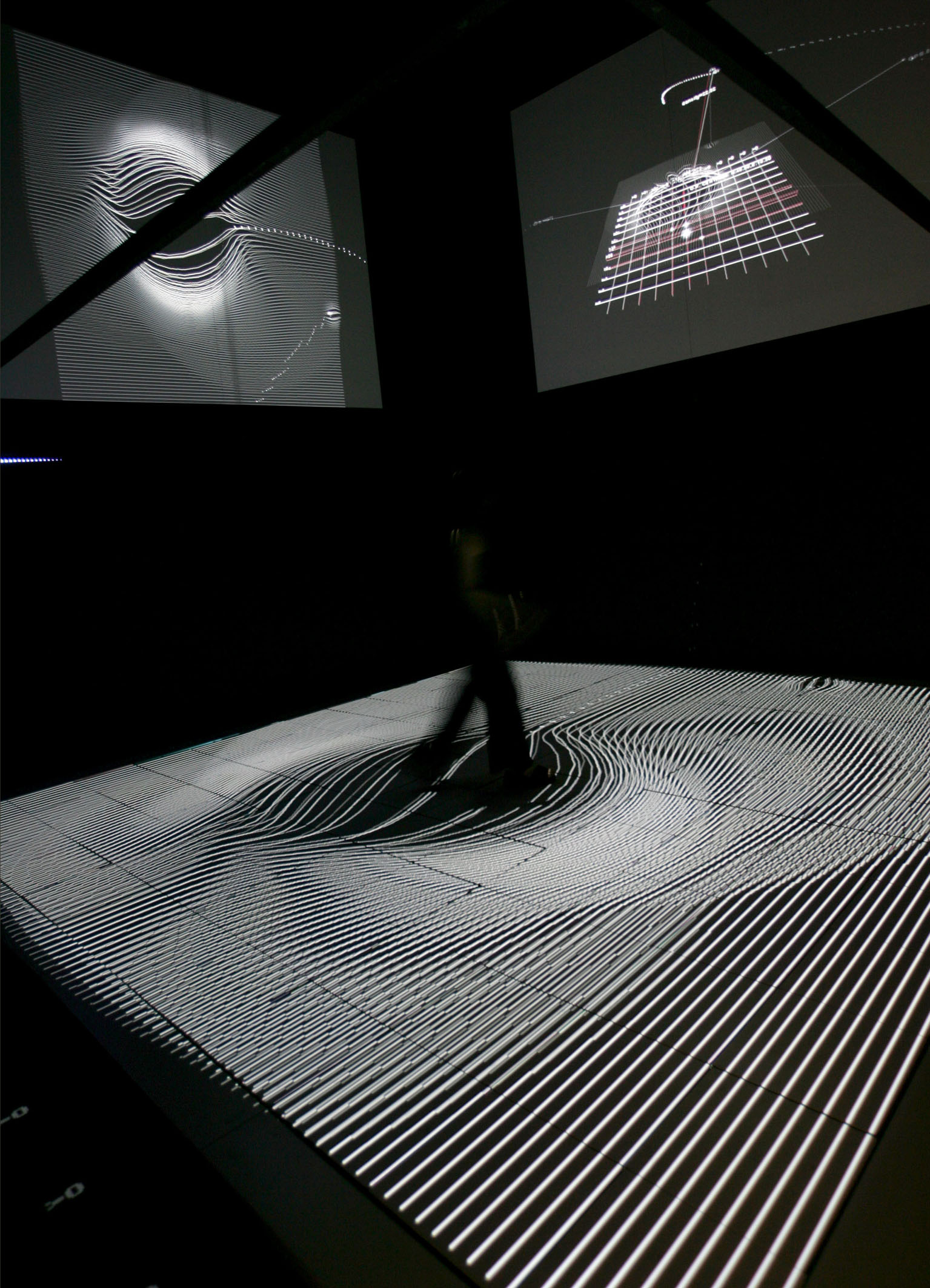
SEIKO MIKAMI & SOTA ICHIKAWA
Gravicells
Gravicells puts the senses on edge. This installation produces a visualization and sonification of the force of gravity acting upon the visitor. Interconnected sensors continuously measure the visitor’s weight, movements and speed. The resulting data are converted into physical audio-visual experience by various media systems.

Don Brown
Yoko VIII
The sculpture is one of a series of works Brown began making in 1999 using his wife as a model. All the works are made to scale using Yoko Brown’s exact measurements; the sculptures vary between half and three-quarter scale. They are all cast in the same white acrylic composite resin but the figure is variously dressed and posed in each. more…

marc quinn
We Share Our Chemistry With the Stars (XX200)
The works measure two metres across, with Quinn describing them as ‘stealth portraits’, at once unique and universal and not just an image of the sitter, but an actual visual index of their identity. Using a macro-lens, Quinn captures the sitter’s iris in incredible detail and then uses an airbrush technique to apply oil paint onto canvas, transforming the images into these large-scale works. The eye appears virtually abstract and the pupil appears like a aperture or hole in the centre of a fine, detailed network of colourful lines.more…

BERNIE LUBELL
Conservation of Intimacy
Made of pine, latex, music wire, copper, nylon line, paper, pens and video surveillance. It measured 20′ x 35′ x 26′ at Southern Exposdure.
A couple rocking on the bench sends air pulses to another room causing balls to move and pens to transcribe their motions onto paper. The paper is moved by a third person on a stationary bike. The couple on the bench can watch the balls on a video monitor before them where the balls appear to bounce into the air. The motion is delayed and languid as though under water. Action is best when the couple is moving slowly together. As visitors work together to animate the mechanisms, they create a theatre for themselves and each other. By encouraging participation, and touch the pieces coax visitors to engage their bodies as well as their minds. The way that pieces move and feel and sound as you rock them, pedal, crank and press against them applies the kinesthetic comprehension’s of childhood to the tasks of philosophy. Bernie Lubell’s interactive installations have evolved from his studies in both psychology and engineering. As participants play with his whimsical wood machines, they become actors in a theater of their own imagining.
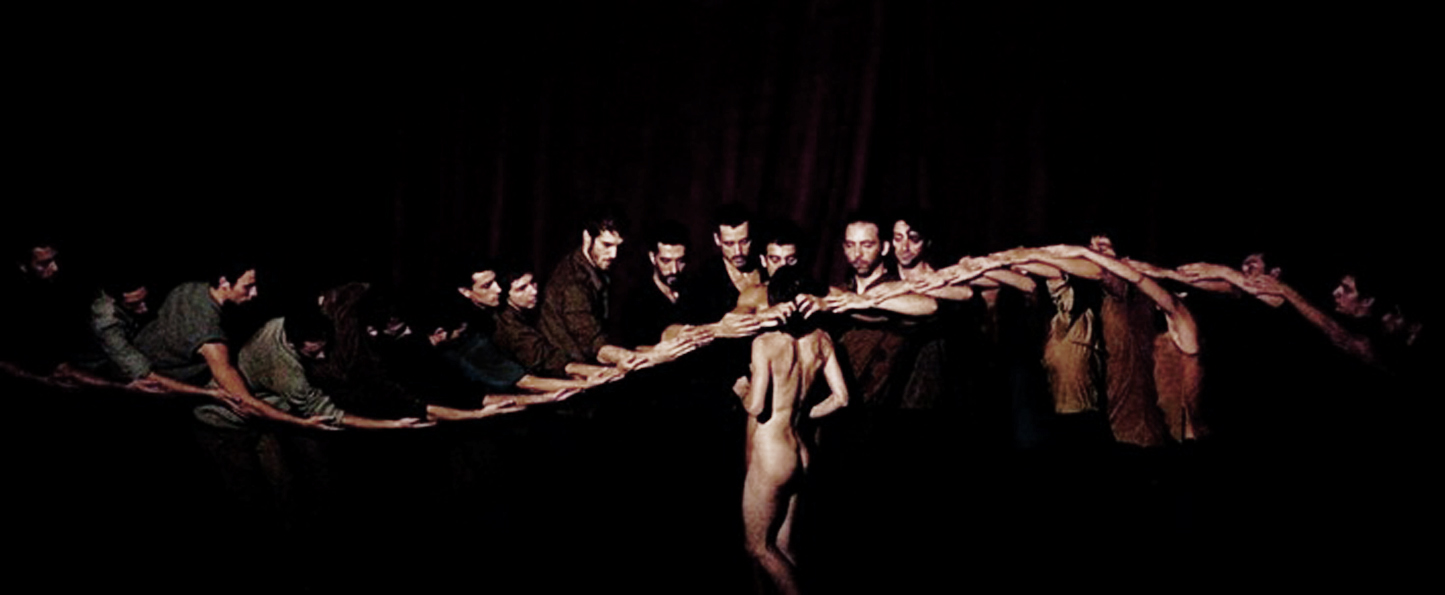
DIMITRIS PAPAIOANNOU
ΔΗΜΉΤΡΗΣ ΠΑΠΑΪΩΆΝΝΟΥ
ДИМИТРИСОМ ПАПАИОАННУ
NOWHERE
This central scene is dedicated to the memory of PINA BAUSCH
NOWHERE explores the nature of the theatrical stage itself, a spatial mechanism continually transformed and redefined by the human presence to denote any place, and yet designed to be a non-place. 26 performers measure and mark out the space using their bodies, pitting themselves against its dimensions and technical capabilities in a site-specific performance that can be presented nowhere else.
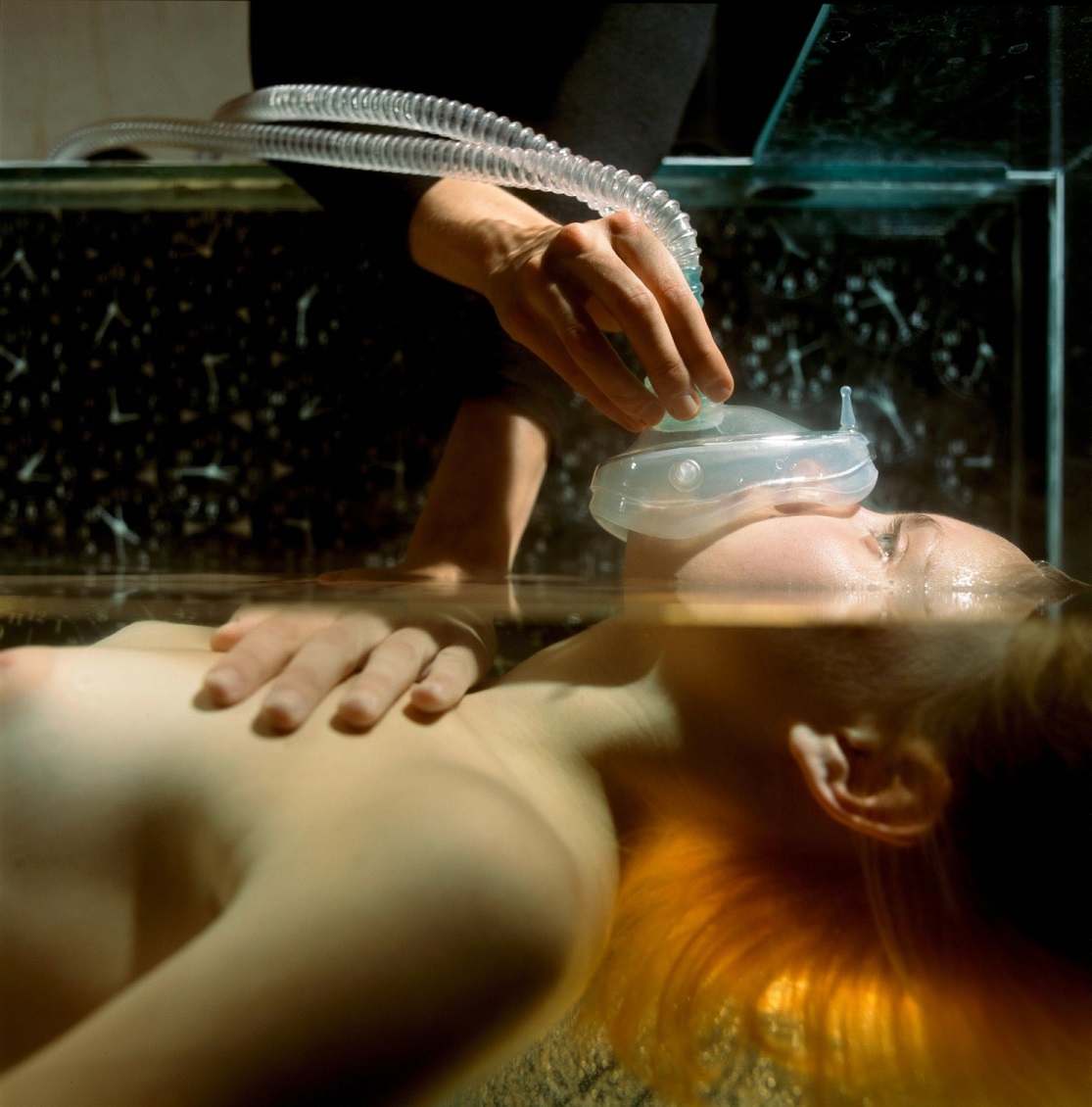
REYNOLD REYNOLDS
레이 놀드 레이놀즈
РЕЙНОЛЬД РЕЙНОЛЬДС
Secrets Trilogy
Secret Machine
Secret Machine is the second of the Secrets Trilogy; a cycle exploring the imperceptible conditions that frame life and is preceded by Secret Life (2008) and followed by Six Easy Pieces (2010)
In Secret Machine a woman is subjected to Muybridge’s motion studies. She is treated in the same fashion as in the original Muybridge photography: with Greek aesthetic in a Cartesian grid. A short time after Mybridge’s studies, Duchamp painted Nude Descending a Staircase, No. 2 (1912) attempting to show time on a flat surface. He is expanding cubism and painting into another dimension: time. Time is about movement and change, like our experience of reality. Without change life does not exist. Photography does not capture this experience. In Secret Machine different filming techniques are compared to the motion of the body. The film camera becomes another measurement tool in a way a video camera cannot. The intention was to make an art piece from the point of view of a machine, specifically a camera.
.
.
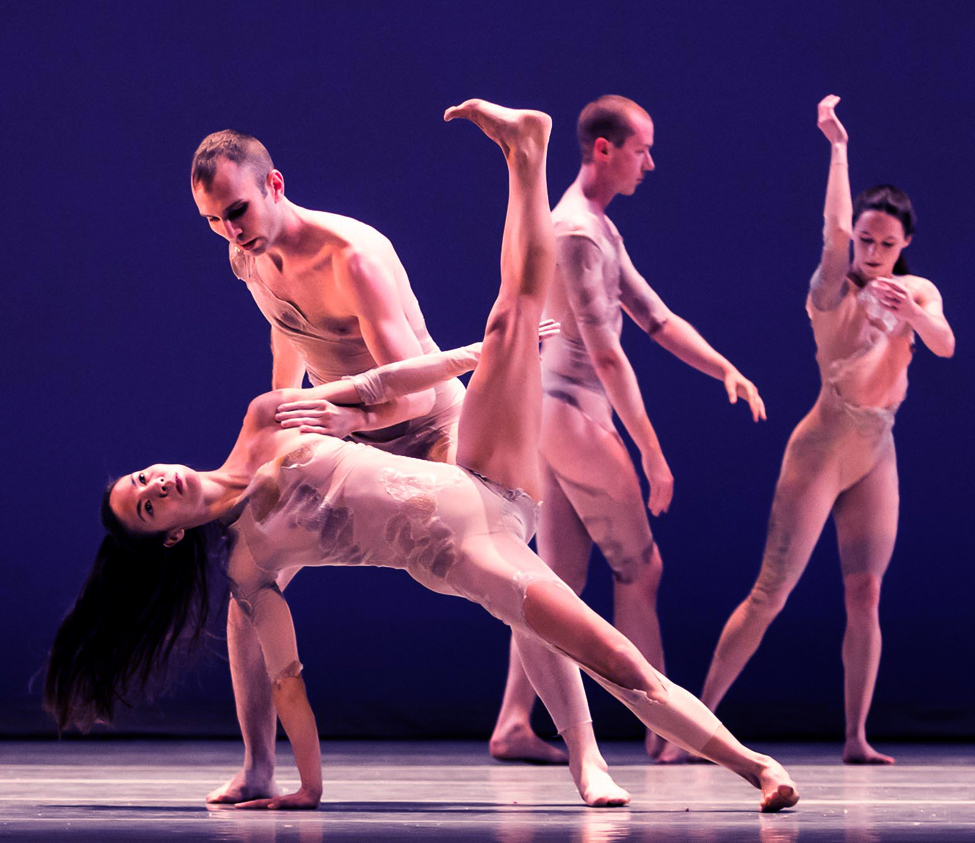

LISA PARK
Лиза Парк
eunoia
“Eunoia” is a performance that uses my brainwaves — collected via EEG sensor– to manipulate the motions of water. It derives from the Greek word “ey” (well) + “nous” (mind) meaning “beautiful thinking”. EEG is a brainwave detecting sensor. It measures frequencies of my brain activity (Alpha, Beta, Delta, Gamma, Theta) relating to my state of consciousness while wearing it. The data collected from EEG is translated in realtime to modulate vibrations of sound with using software programs. EEG sends the information of my brain activity to Processing, which is linked with Max/MSP to receive data and generate sound from Reaktor.
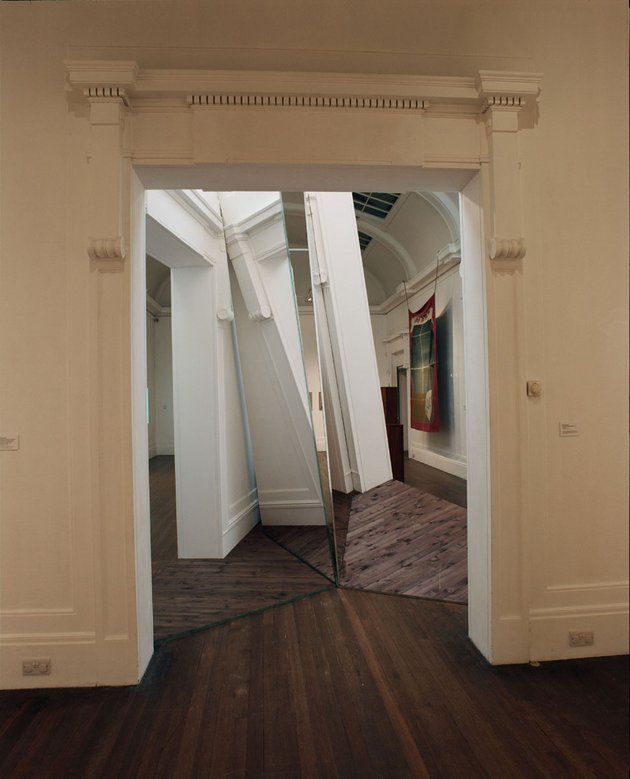
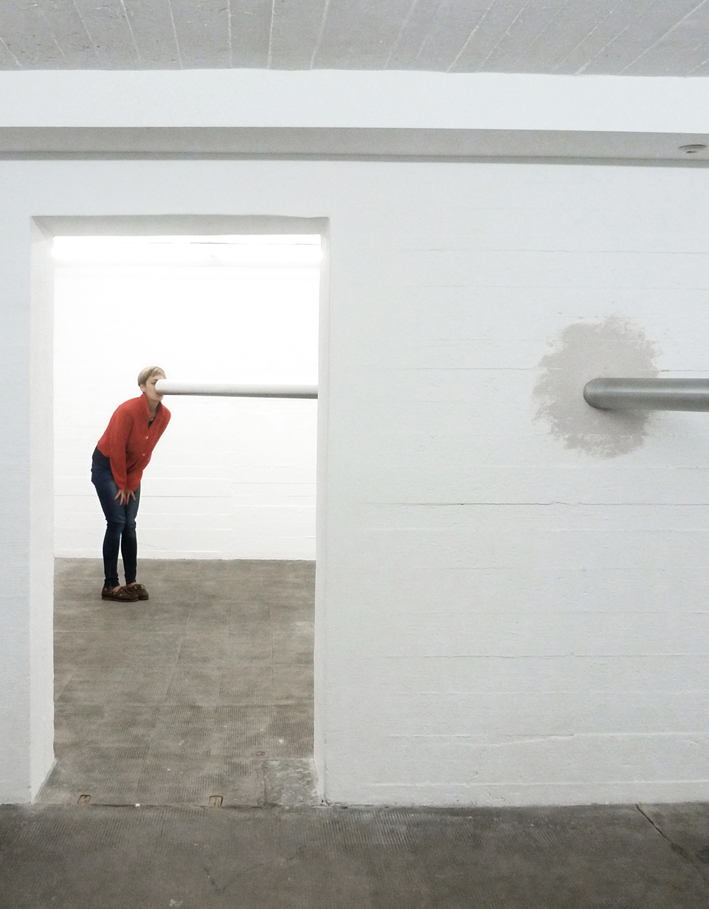

Arvo Part
АРВО ПЯРТ
Silentium
Tabula Rasa – II.
The second movement of Tabula Rasa, “Silentium,” or silence, is composed in the key of D minor, giving the impression of a V-I cadence in relation to “Ludus” in A minor. The movement begins with an arpeggiated D minor second inversion chord, played by the prepared piano. “Silentium” expands as a mensuration canon. Pärt divides the instruments into three sections; solo violins, violin I and violin II, and viola and cello. Each pair, divided into melodic and tintinnabuli voices, begin on a central pitch, and move at a different rhythmic speeds. Pärt expands the music by adding one pitch above and below the central pitch of each pair in each successive section. Every time the solo violins reach their central pitch, “D,” the piano again plays a D minor chord and the contrabass plays an octave “D.” Once each of the sections reach their expanded octave range, they fade out of the texture. The solo violins, moving at the slowest rhythmic speed, reach their octave span in measure 130, and then begin a downward descent of a D minor four-octave scale.

DILLER + SCOFIDIO
The Blur Building (an architecture of atmosphere)
The Blur Building is a media pavilion for Swiss EXPO 2002 at the base of Lake Neuchatel in Yverdon-les-Bains, Switzerland.From piles in the water, a tensegrity system of rectilinear struts and diagonal rods cantilevers out over the lake. Ramps and walkways weave through the tensegrity system, some of them providing a counterweight for the structure. The form is based on the work of Buckminster Fuller.The pavilion is made of filtered lake water shot as a fine mist through 13,000 fog nozzles creating an artificial cloud that measures 300 feet wide by 200 feet deep by 65 feet high. A built-in weather station controls fog output in response to shifting climatic conditions such as temperature, humidity, wind direction, and wind speed.The public can approach Blur via a ramped bridge. The 400 foot long ramp deposits visitors at the center of the fog mass onto a large open-air platform where movement is unregulated. Visual and acoustical references are erased along the journey toward the fog leaving only an optical “white-out” and the “white-noise” of pulsing water nozzles. Prior to entering the cloud, each visitor responds to a questionnaire/character profile and receives a “braincoat” (smart raincoat). The coat is used as protection from the wet environment and storage of the personality data for communication with the cloud’s computer network. Using tracking and location technologies, each visitor’s position can be identified and their character profiles compared to any other visitor.In the Glass Box, a space surrounded by glass on six sides, visitors experience a “sense of physical suspension only heightened by an occasional opening in the fog.” As visitors pass one another, their coats compare profiles and change color indicating the degree of attraction or repulsion, much like an involuntary blush – red for affinity, green for antipathy. The system allows interaction among 400 visitors at any time.Visitors can climb another level to the Angel Bar at the summit. The final ascent resembles the sensation of flight as one pierces through the cloud layer to the open sky. Here, visitors relax, take in the view, and choose from a large selection of commercial waters, municipal waters from world capitals, and glacial waters. At night, the fog will function as a dynamic and thick video screen.

ANNA WILKINSON
Sculptural Simulacrum
“..Inspiration for this project comes from digital sculpture that created by sculptors who use specialized software to create their work.
In my literature review, I was fascinated to learn how much engineering and math are often involved in digital sculpture and to learn that the process of digital sculpturing has many similarities to pattern making which also relies heavily on mathematic, angles, and precise measurements…” “…One of the most inspiring digital sculptors for me was “Basheba Grossman”. I enjoyed many of his pieces, but was especially inspired from his digitally created bronze knots. In addition to the precise geometry of the knot sculptures, something which, even with the naked eye, it’s apparent that the knots are precise symmetrical pieces. What is also fascinating about the knots is that they exist simultaneously as different shapes that still occupy a single space! Collectively the knots form a sphere, or suggest a cycle or globe, yet the components of the knots are often more like bent stretching disc or arms. The knots have no visible foundation, it is impossible to see where the “starting point” and the “ending point” or even the edges of the sculpture exist..”
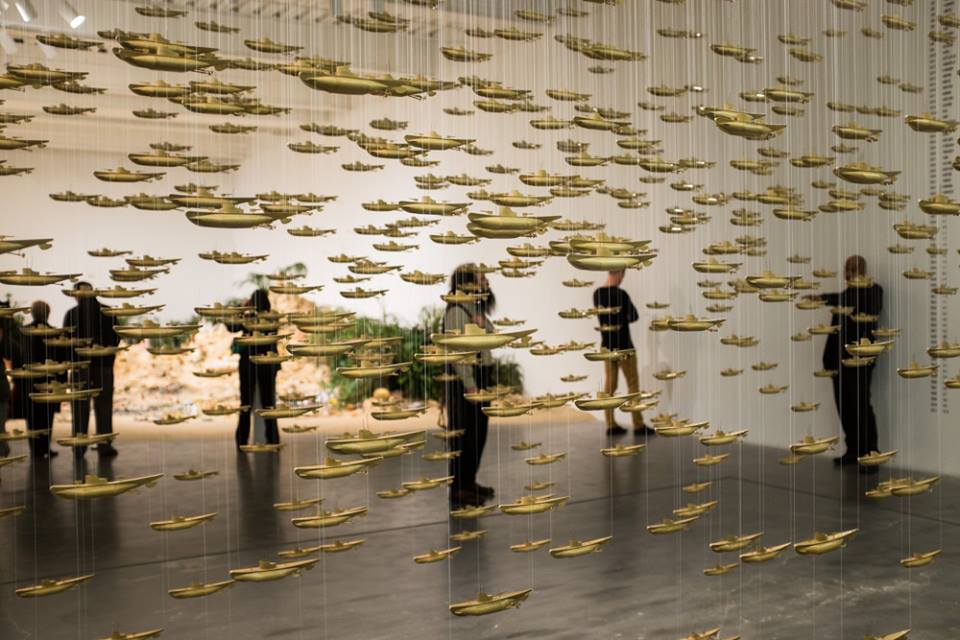


HAUS-RUCKER-CO
하우스-루커-코
是由豪斯拉克科
“Climate Capsules: Means of Surviving Disaster”
In view of the advancing climate change, the exhibition “Climate Capsules: Means of Surviving Disaster” at the Museum für Kunst und Gewerbe Hamburg poses the question: “How do we want to live in the future?” and draws attention to the socio-political consequences of coexistence under new climatic conditions. In view of the fact that the politicians are hesitant to enforce strict measures for climate protection and the citizens very sluggish about changing their habits, the change appears inevitable. The world community is accordingly confronted with the challenge of investigating various possible means of adapting to the climate change. This exhibition is the first to bring together historical and current climate-related models, concepts, strategies, experiments and utopias from the areas of design, art, architecture and urban development – pursuing not the aim of stopping the climate change, but envisioning means of surviving after disaster has struck. More than twenty-five mobile, temporary and urban capsules intended to make human life possible independently of the surrounding climatic conditions will be on view – from floating cities and body capsules to concepts for fertilizing sea water or injecting the stratosphere with sulphur. A symposium, film programme, readings, performances and workshops will revolve around the interplay between design processes and political factors such as migration, border politics and resource conflicts, and investigate the consequences for social and cultural partitioning and exclusion.